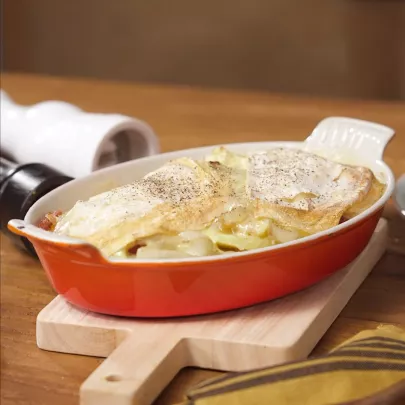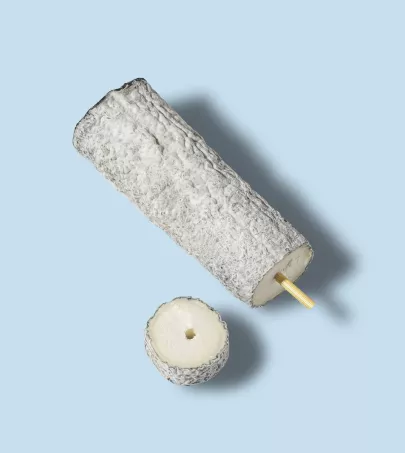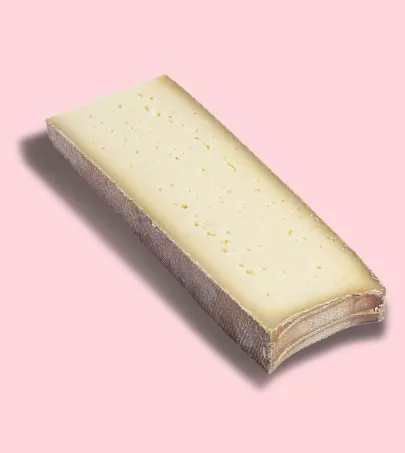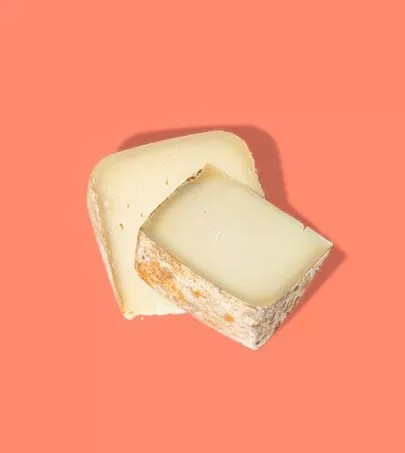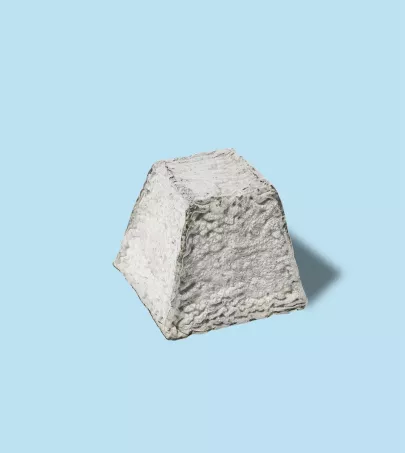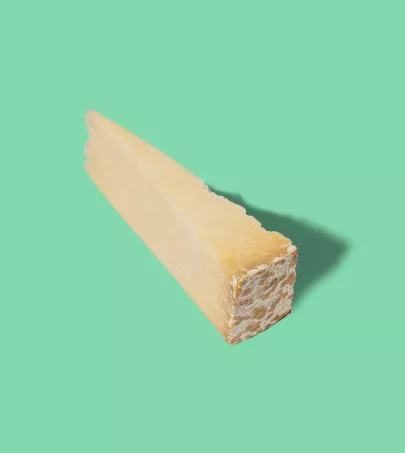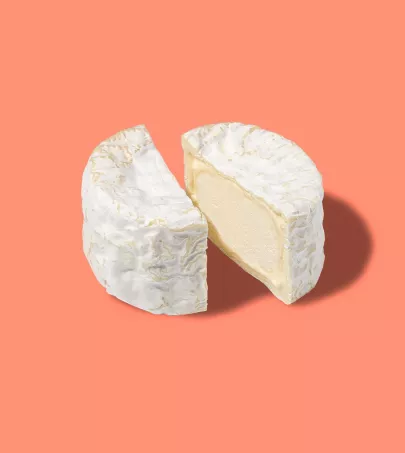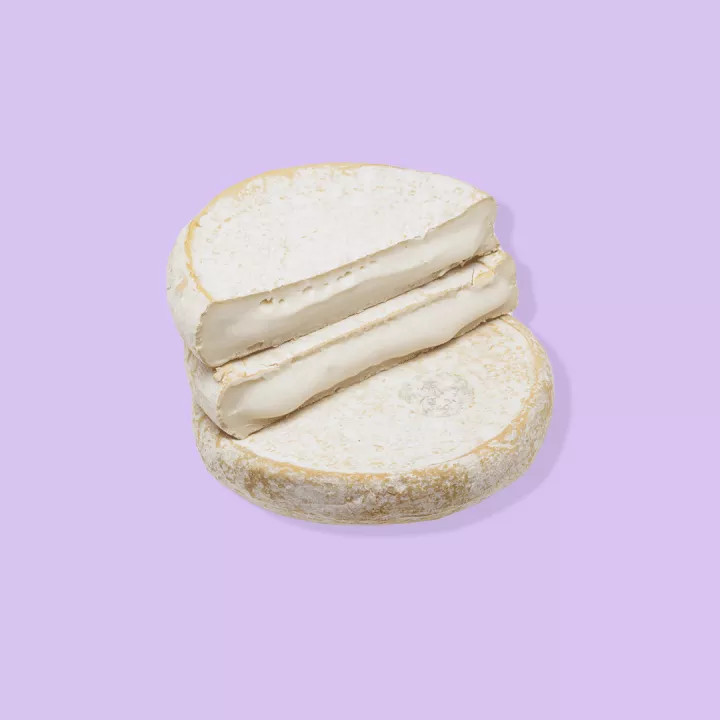
Reblochon PDO
Auvergne - Rhône-Alpes
An unpasteurized cheese from the mountains of Haute-Savoie and the Val d'Arly in Savoie. Reblochon is made exclusively from the raw whole milk of three specific cattle breeds: Abundance, Montbeliard, and Tarine.
The small flat cylinders (either 9 or 13-14 cm wide) have a thin rind and contain a creamy cheese that tastes of hazelnut, and each is marked by a round red or green casein pellet. With 16,000 tons produced yearly, Reblochon is France’s second AOP cheese by volume.
Ce qu'il faut savoir
This traditional Savoyard cheese was created in the 13th century. It was awarded a Controlled Designation of Origin (AOC) in 1958, and a Protected Designation of Origin (PDO) in 1992. Today, 620 farms in the designated area produce milk for the production of Reblochon.
What’s in a name? The backstory
In the late Middle Ages, the farmers in the region had to pay a tax known as the “right of ociège,” granting them the right to farm the pastures. The amount they owed was determined by the number of pots of milk their herds produced in a day. Landowners collected this tax once a year, and on that day, the farmers would only partially milk their cows. Once the tax collector was gone, the farmers would complete their milking. The second milking yielded milk rich in cream and perfect for making cheese. The farmers’ clever move resulted in lower taxes and the creation of a wonderful cheese.
Its name comes from the word “re-blocher,” which means “to pinch the cow’s udder a second time.”
How it’s made
The milk used for producing Reblochon is not cooked or pasteurized. Rennet is added and the milk curdles in less than an hour. The curds are then cut into tiny pieces, either by hand or utilizing a curd slicer, roughly the size of a grain of wheat, and then distributed into molds. Casein pellets are added before the molds are pressed with weights for a few hours to help strain off any excess whey. Once drained, the Reblochons are soaked in brine for 1-2 hours, then kept in a dryer for about a week, where they are turned daily. Once dry, their rinds are washed and the Reblochons are transferred to a cellar to mature for at least 18 days, some farm-made varieties are matured for up to 40 days.
The two types of Reblochon
Le Fermier is made by a farm producer, using milk from a single herd. The cheese is made on the farm, twice a day, right after milking, and is manufactured entirely by hand. Reblochon fermier can be identified by a green casein pellet.
Le Laitier is made in a cooperative or cheese dairy, with milk collected from several farms. The cheese is made once a day, within 24 hours of milking, and manufacturing can be automated with a curd slicer. Reblochon laitier contains a red casein pellet.
Caractéristiques
À l'oeil
Au toucher
En bouche
Nutrition et bienfaits
Contains calcium, protein, minerals, vitamins, and essential fatty acids.
Note de la rédaction
Comment l'utiliser
Accorder avec
Potatoes, winter squash, mushrooms, cured meats, walnut bread, almonds, hazelnuts and pecans.
For wines, try Savoie wines such as Apremont, Roussette de Savoie, or Chignin-Bergeron.

